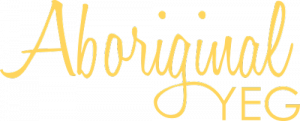
“We are all so busy chasing rabbits that we can’t see there is a moose right behind us. Planning is the new moose.”
This is what a colleague once said to me, what he meant was that taking a moment to step back allows you to see something you hadn’t noticed before, something that might provide broader and longer term benefits.
I have carried this story with me for years until I realized it was the perfect expression of my vision, values and skill set that I offer. I am not a hunter and cannot tell you how to set a snare a rabbit or track a moose, but I can offer my understanding of processes and systems while taking that important step back and developing a strategic, intentional and coordinated approach to planning, engagement and community development.
I have over 20 years of professional experience working on Aboriginal issues and with Aboriginal communities in the private, public and non-profit sectors, including 10 years working in the federal and provincial public service in both program and policy areas. I have a strong understanding of the socio-economic challenges facing Aboriginal peoples and extensive and specialized knowledge of the historical, legal and political context of Aboriginal peoples’ experience(s) in Canada.
As a Cree/Métis woman who grew up in urban centres, I am passionate about creating space for Aboriginal-led and culturally-based solutions that are grounded in community development and strength-based approaches that recognize the diverse and distinct perspectives of the many Aboriginal peoples living in urban centres.
I want to play a role in changing the conversation and finding new and innovative pathways for Aboriginal peoples living in urban centres. I want to contribute to building a community that reflects and promotes Aboriginal peoples ways of knowing and being. I want to assist in making positive and lasting impacts in urban Aboriginal communities.
Changing the conversation includes taking a strength-based approach to community development rather than a needs/deficiency model. A strength-based approach empowers Aboriginal peoples and communities to be active and engaged in determining their priorities, developing solutions, and building on their successes. This approach identifies and mobilizes existing but often unrecognized and untapped resources within the Aboriginal community.
I connect people and ideas and create networks to encourage collaboration and partnerships. As a natural planner, organizer and researcher I endeavor to create efficiencies and promote innovation.
It has always been important for me as a contemporary Cree/Métis woman to find a balance between the traditional and modern by bringing them together. Finding ways to bridge, or indigenize, knowledge systems can create new understandings and representations of Indigenous values and worldview in a contemporary context.
One of my creative strengths is using visual representations to demonstrate complex and multi-faceted concepts and issues. As a result of my professional background I have an understanding of and can navigate government systems, translate processes, and influence policy directions.
It is also important to create a strong visual presence of Aboriginal peoples within the urban landscape in Edmonton. That recognizes and acknowledges the long history of First Nation and Métis people on the prairies, their contributions and the continued and contemporary existence of all Aboriginal peoples living in the city.
The values in the seven grandfather teachings (respect, bravery, humility, wisdom, truth, honesty and love) combined with the principles of an asset-based approach (relationships, connections, citizen, strengths, sharing, mobilization) can support aspirations towards collaboration, coordination, capacity, communication, commitment, and community.
- Where collaboration is working together;
- Coordination is recognizing each others’ strengths;
- Capacity is having the necessary tools and resources;
- Communication is ways to share information, knowledge and successes;
- Commitment is being engaged/invested and mobilizing; and,
- Community is what happens when the previous elements in combination contribute to shared goals.
Taken together the grandfather teachings, asset-based approach and six C’s can contribute to the well-being, decolonization and ultimately the self-determination of Aboriginal peoples and communities.
